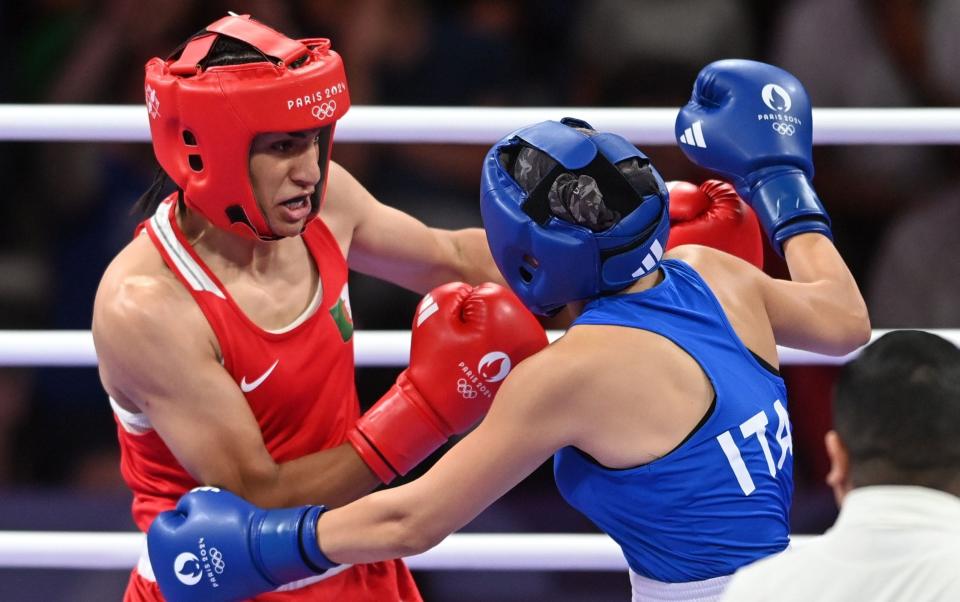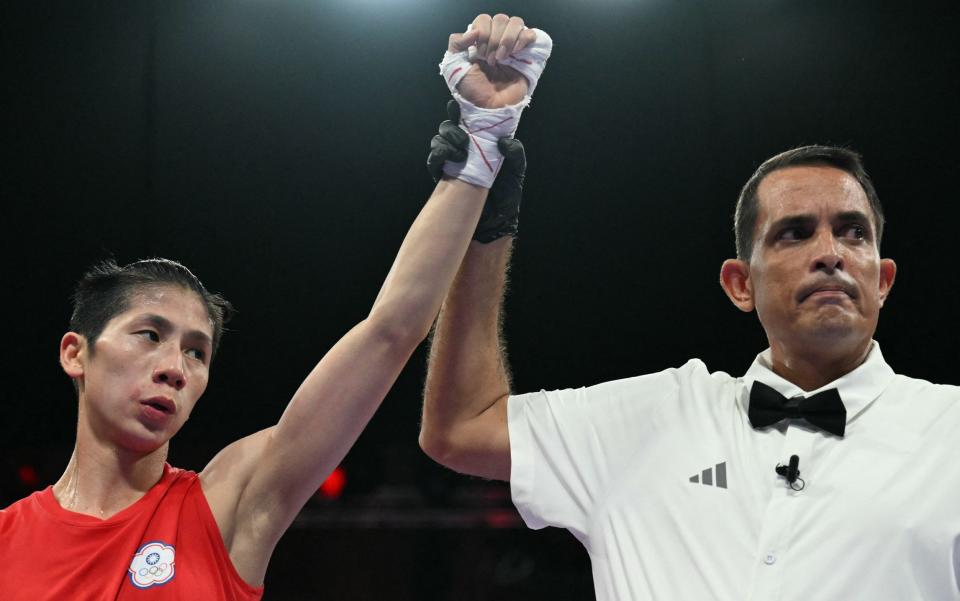Sports
‘Not a transgender issue’: What you need to know about Imane Khelif at the Olympics



The gender row engulfing the Olympic women’s boxing competition exploded this week after the first opponent of the Algerian fighter who failed two sex tests abandoned their bout after 46 seconds.
Italy’s Angela Carini was given a suspected broken nose by Imane Khelif, whom the International Olympic Committee controversially allowed to enter the welterweight event in Paris despite the 25-year-old being disqualified by the International Boxing Association last year following gender testing.
Khelif’s next opponent, Hungary’s Anna Luca Hamori, who in the build-up to their quarter-final fight shared an incendiary picture portraying the Algerian boxer as a ‘beast’, went the distance but was ultimately overpowered.
Khelif’s ongoing participation has raised serious questions for the IOC and IBA, several of which remain unanswered.
What is Khelif’s actual sex?
This has yet to be confirmed and there may not even be a straightforward answer. Khelif was disqualified from last year’s Women’s World Boxing Championships after undergoing what IBA president Umar Kremlev told Russian news agency TASS had been DNA tests.
He added: “Based on the results of the tests, it was proven that they have XY [male] chromosomes. Such athletes were excluded from the competition.”
The IBA this week confirmed Khelif was also tested at the previous year’s World Championships, adding she had not undergone “a testosterone examination” but was “subject to a separate and recognised test, whereby the specifics remain confidential”.
It said Khelif had initially lodged an appeal against her disqualification with the Court of Arbitration for Sport only to withdraw it. The IOC, meanwhile, has already stated “this is not a transgender issue” and pointed out she also competed at the last Olympics in Tokyo, but it has provided no further clarity as to Khelif’s status.
It is most likely the boxer is an athlete born with differences in sex development (DSD), akin to middle-distance runner Caster Semenya. The extent of any such differences can vary but those with DSD assigned as female at birth often possess internal testes that produce testosterone, giving them a potential size and strength advantage over those without them.


Why is Khelif allowed to compete at the Olympics?
After previously policing gender eligibility at the Games, the IOC has passed the buck to the international federations of individual sports, many of which have now banned transgender women from competing in female events. The likes of athletics also have rules in place governing those with DSD, which are enforced at the Olympics.
So, under normal circumstances, you would expect the IOC to follow the IBA’s lead when it comes to Khelif’s eligibility. However, the IBA has not run the Olympic boxing competition since 2016 following a major corruption scandal, with the IOC instead taking charge.
That has seen it use arguably out-of-date gender-eligibility rules at the Games, prompting major criticism from women’s rights campaigners. The fact it is effectively at war with the IBA and that a rival international federation, World Boxing, could end up running the sport at the Olympics in future have also not helped when it comes to alignment between the two bodies.
It is also unclear why Khelif was disqualified by the IBA only before her gold-medal match at last year’s World Championships given she had been tested a year earlier, when she won silver.
Is Khelif the only boxer to fail a gender test?
No. Like Khelif, Taiwan’s Lin Yu-Ting is also participating at these Olympic Games and was disqualified from last year’s World Championships as a result of similar tests conducted there and the previous year.
She was stripped of a bronze medal won at last year’s event. She had won gold the previous year, to add to a bantamweight title she had claimed in 2018.
Yu-Ting won her first fight at Paris 2024 with victory over Uzbekistan’s Sitora Turdibekova in the women’s 57kg round of 16.


How likely is Khelif to win?
She is the heavy favourite. The majority of leading bookmakers have even halted betting on her category, signalling how strongly tipped she has become.
What happens next?
It will be interesting to see if further abandonments, or even boycotts, follow. Sharron Davies, the British swimming icon turned women’s rights campaigner, told Telegraph Sport: “Boxing countries need to come together and say, ‘Enough!’, to protect female boxers and the integrity of the sport.”
Any legal challenge to the IOC regulations would likely have to be lodged with a civil court by an affected athlete and would be potentially very expensive.





